20 Most Common Types of Butterflies in Virginia (With Pictures)
-
Pete Ortiz
- Last updated:
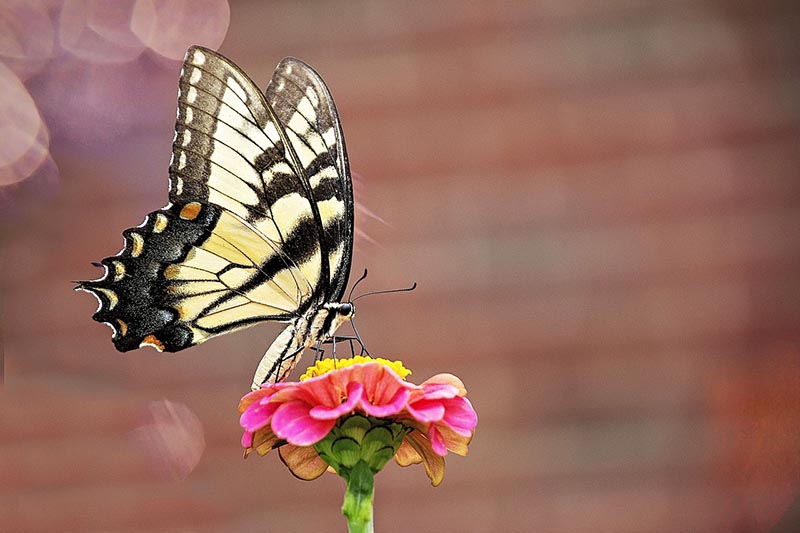
With over 100 butterfly species in Virginia 1, it can be challenging to identify what kind of butterfly you saw. While we didn’t highlight every possible butterfly you can find in Virginia for you here, we did highlight some of the most common you can see flying around the state.
They vary in size, color, and habitats, and our guide will help you sort through it all for some of Virginia’s most common types of butterflies.
The 20 Most Common Types of Butterflies in Virginia
1. Eastern Tiger Swallowtail Butterfly
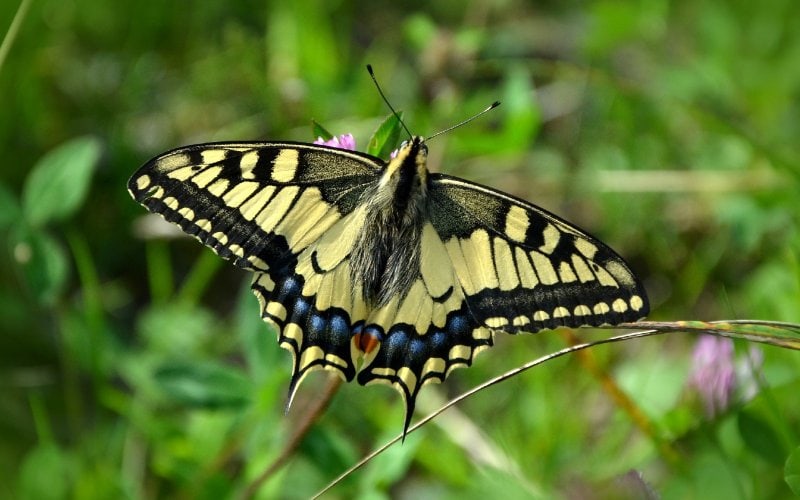
| Scientific Name: | Papilio glaucus |
| Wingspan: | 3.1 to 5.5 inches |
The Eastern Tiger Swallowtail is a larger butterfly you can find throughout the eastern side of the United States. Males feature a mix of white, black, and blue colorings, while females can be either almost all black or a mix of black and yellow.
They’re abundant throughout Virginia, and because of their larger size, they’re one of the most sought-after species for butterfly watchers.
2. Red Admiral Butterfly
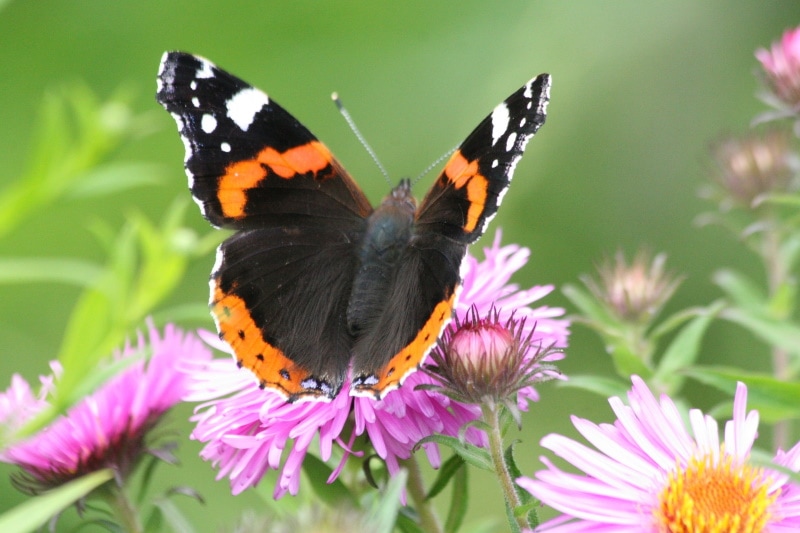
| Scientific Name: | Vanessa atalanta |
| Wingspan: | 1.75 to 2.5 inches |
Red Admirals aren’t the largest butterfly in Virginia, but they’re not the smallest either. They have beautiful orange and black coloring, and if you catch them as a caterpillar, they’re all black with white spots.
While you can find the Red Admiral in Virginia, you can really find them all over the continental United States. They’re also the most populous butterfly in Virginia!
3. Monarch Butterfly

| Scientific Name: | Danaus plexippus |
| Wingspan: | 3 to 4 inches |
Perhaps no butterfly attracts quite as much attention as the Monarch. They have an extremely large wingspan, and with orange and black coloring through their body, they really stand out.
Monarch butterflies migrate through Virginia throughout the Spring, so if you’re looking to spot one, you’ll need to head out before the weather starts to warm up too much.
4. Painted Lady Butterfly
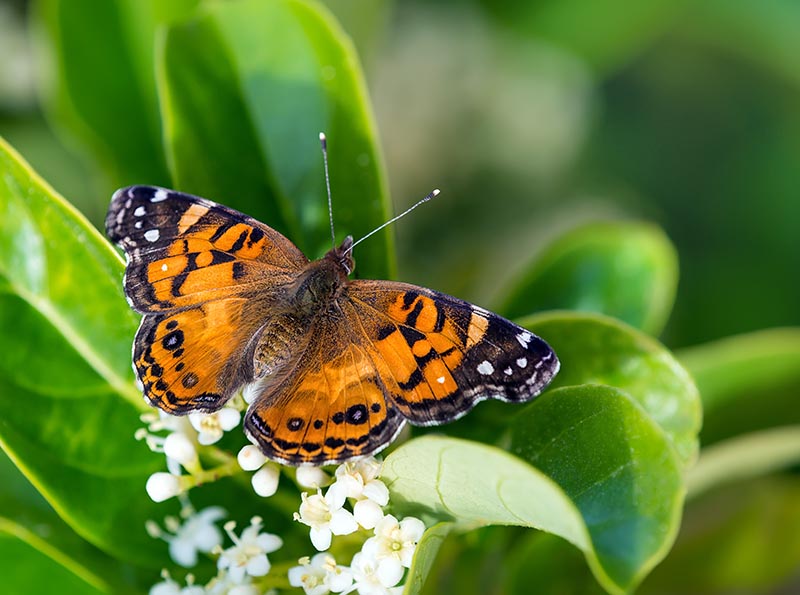
| Scientific Name: | Vanessa cardui |
| Wingspan: | 1.6 to 2.9 inches |
The Painted Lady is another butterfly species that migrates through Virginia. They like to fly south during the winter months, but during the spring they head back up north towards Virginia.
They like quiet and peaceful areas, so try to find somewhere away from all the commotion if you’re trying to spot one.
5. Sachem Butterfly

| Scientific Name: | Atalopedes campestris |
| Wingspan: | 1 to 1.5 inches |
The Sachem butterfly isn’t the most attractive butterfly species in Virginia, but that doesn’t make them any less common. They feature an all-brown body, and they’re smaller than many other butterflies.
They’re pretty dull looking compared to other more colorful butterflies, but they still serve a vital role in the local ecosystems by consuming nectar and pollinating flowers in the process!
6. American Lady Butterfly
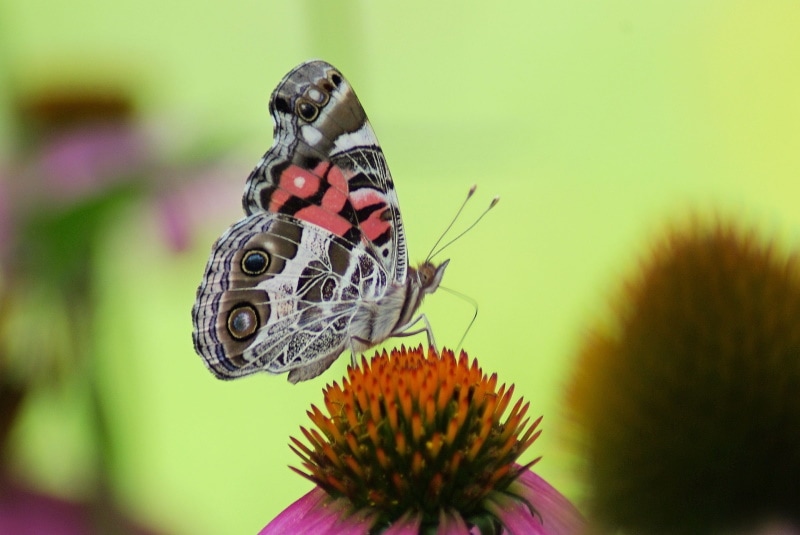
| Scientific Name: | Vanessa virginiensis |
| Wingspan: | 1.75 to 2.75 inches |
The American Lady is a smaller butterfly found throughout most of the continental United States, and Virginia is no exception. They have a bright orange color with white and purple spots, and they have large eyespots with cobweb markings on their underside.
They might not be the largest butterfly out there, but with colors like this, you’re still going to take special notice of one if you spot it.
7. Pearl Crescent Butterfly
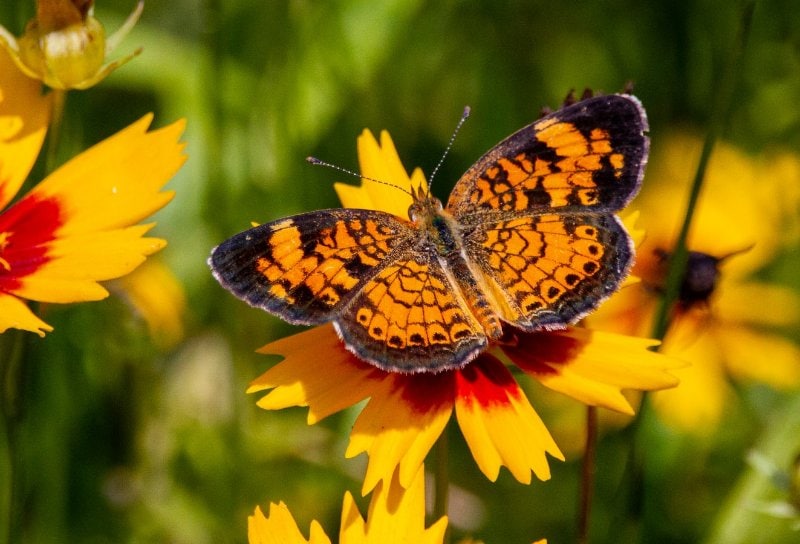
| Scientific Name: | Phyciodes tharos |
| Wingspan: | 1 to 1.5 inches |
The Pearl Crescent is another small butterfly in Virginia, but they have a color pattern extremely similar to a monarch butterfly. They have orange and black throughout their wings, although the edge is primarily black.
The Pearl Crescent loves to bask in the sun, so if you’re looking to spot one, find a sunny place with plenty of space for them to flutter from flower to flower.
8. Viceroy Butterfly
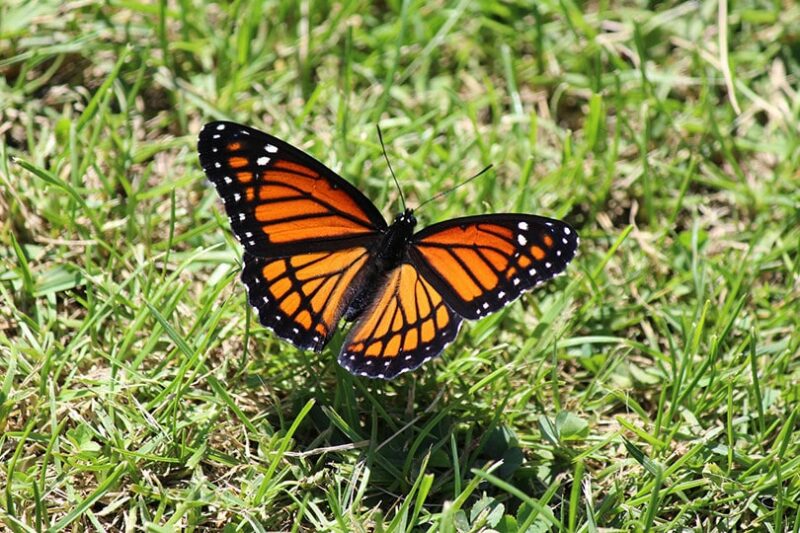
| Scientific Name: | Limenitis archippus |
| Wingspan: | 2.5 to 3.25 inches |
No butterfly gets more confused with the monarch butterfly than the Viceroy. That’s because they have almost identical markings, with the only real difference being a black line that appears on the bottom of the wing of a Viceroy.
The color markings are almost identical, but the Viceroy is also about a full inch smaller than a Monarch butterfly.
9. Eastern Tailed-Blue Butterfly
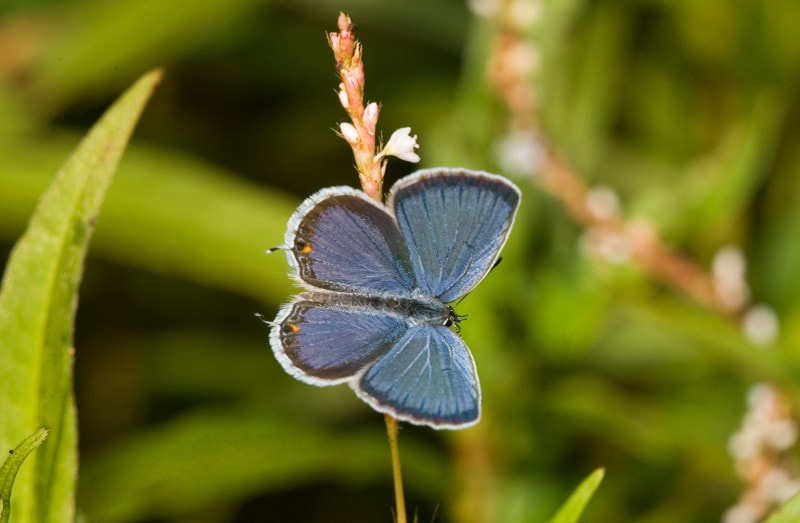
| Scientific Name: | Cupido comyntas |
| Wingspan: | 0.75 to 1 inch |
The Eastern Tailed-Blue butterfly is one of the smallest yet most abundant butterflies in Virginia. But while “blue” might be in the name, if you look at an Eastern-Tailed Blue they’re not the most impressive butterfly out there. They have a white underside mixed with gray, and the inside of their wings is a dark gray/blue color.
10. Hackberry Emperor Butterfly
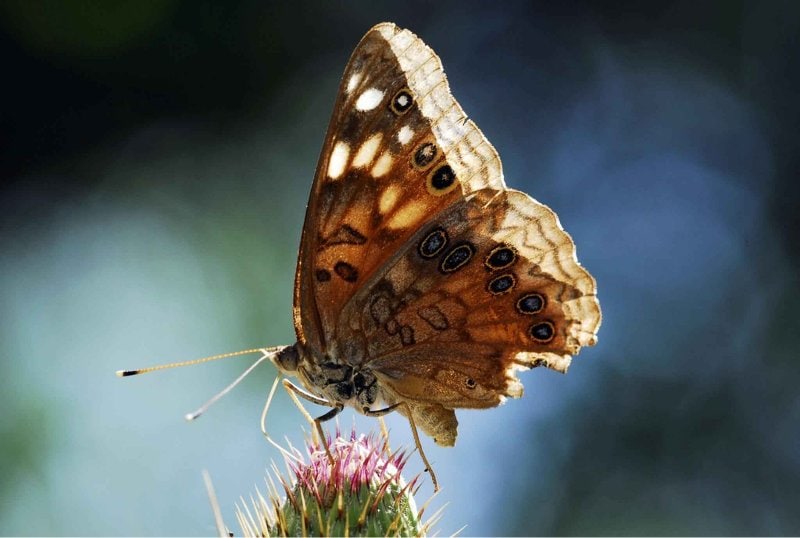
| Scientific Name: | Asterocampa celtis |
| Wingspan: | 1.25 to 2.5 inches |
The Hackberry Emperor features a brown and black body, making it one of the more forgettable butterfly species in Virginia. Making things even more challenging for those that want to spot one is the fact they don’t eat nectar, so you won’t find them near flowers.
The Hackberry Emperor lives throughout most of the southeastern and central United States, but you can’t find them along the west coast or the upper northeast.
11. Common Buckeye Butterfly

| Scientific Name: | Junonia coenia |
| Wingspan: | 1.5 to 2.75 inches |
While you can only find some butterflies throughout the spring, summer, or fall, that’s not the case with the Common Buckeye. They live throughout the entire year, and they’ll even reproduce during the winter months.
The Common Buckeye loves open spaces, and they have large eyelets on their wings to help ward off predators.
12. Red-Spotted Purple Butterfly
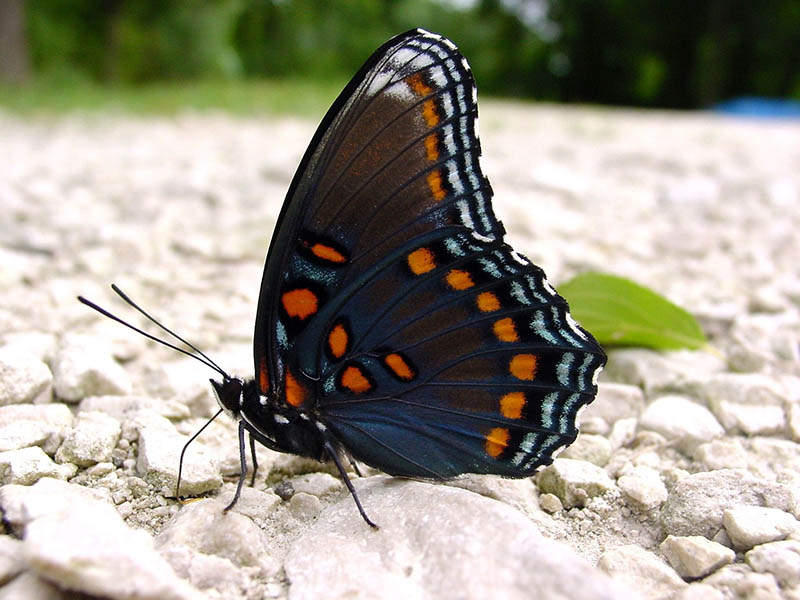
| Scientific Name: | Limenitis arthemis |
| Wingspan: | 3 to 3.5 inches |
If you’re looking for the most beautiful butterfly in Virginia, the Red-Spotted Purple might be it. It features hues of dark and light blue, splotches of orange and white, and there are small patches of black that really help set it apart.
You can find the Red-Spotted Purple throughout much of the eastern United States, but they don’t venture too far north or west.
13. Silver-Spotted Skipper Butterfly
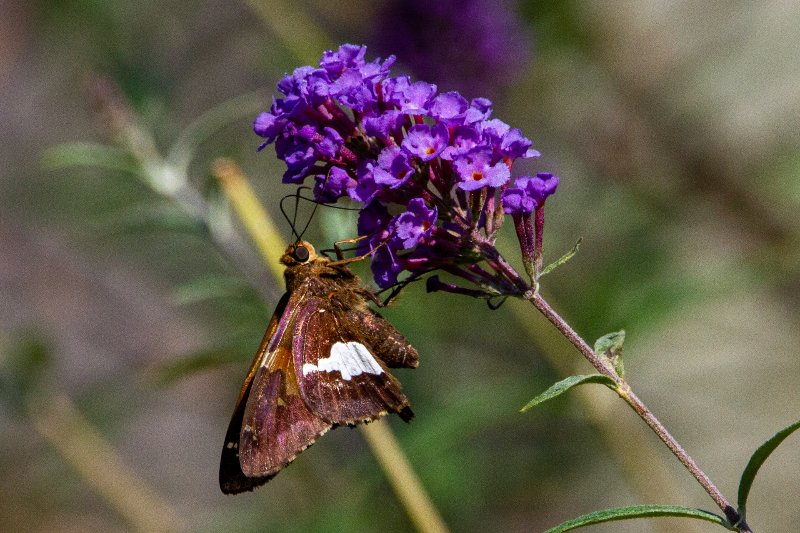
| Scientific Name: | Epargyreus clarus |
| Wingspan: | 1.75 to 2.5 inches |
The Silver-Spotted Skipper is a less attractive butterfly species that most people don’t actively try to seek out. They migrate throughout the different seasons, and you can find them in Virginia during the warmer months of the year.
They do have some white and yellow on their wings, but their signature traits include a large brown body and large brown wings.
14. Mourning Cloak Butterfly
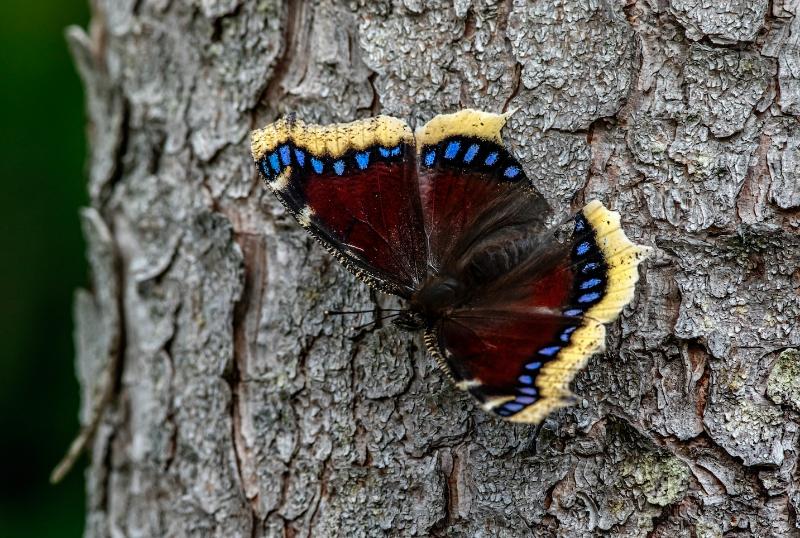
| Scientific Name: | Nymphalis antipoa |
| Wingspan: | 3 to 3.5 inches |
You might not think a black butterfly can present a striking appearance, but the Mourning Cloak should put a rest to that train of thought. They have large sleek black wings with a white edge around them and splotches of blue in them.
You can find the mourning cloak throughout almost all of the United States and Canada, but they don’t venture down into the farthest south regions of Texas and Florida.
15. Zabulon Skipper Butterfly
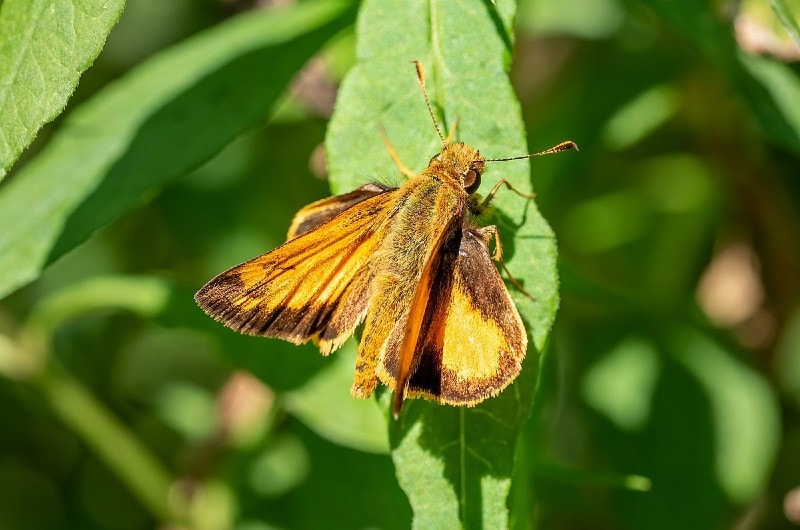
| Scientific Name: | Poanes zabulon |
| Wingspan: | 1 to 1.5 inches |
You can find the Zabulon Skipper anywhere there’s a dry habitat with plenty of open spaces. They love parks and gardens, and you can find them near the edge of woodlands.
They have a brown body that isn’t the most attractive, but because of their smaller wingspan, they don’t stand out all that much anyway.
16. Question Mark Butterfly
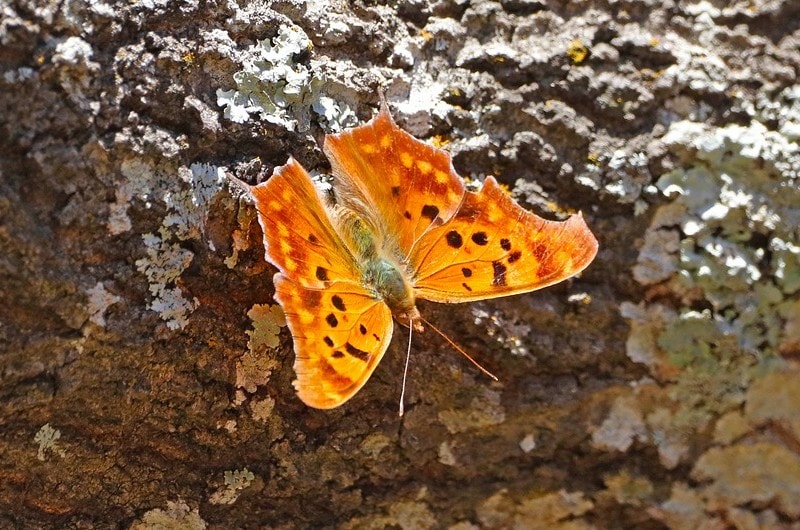
| Scientific Name: | Polygonia interrogationis |
| Wingspan: | 2.25 to 3 inches |
While the bright orange and brown colorings on the Question Mark butterfly make them a joy to watch, it’s their unique wing shape that makes them stand out the most.
They get their name from the edge of their wings, and they love to hang out in the forest. Elms trees and thickets of nettle are their favorite places to hang out, and you can find them throughout the entire state of Virginia.
17. Cabbage White Butterfly
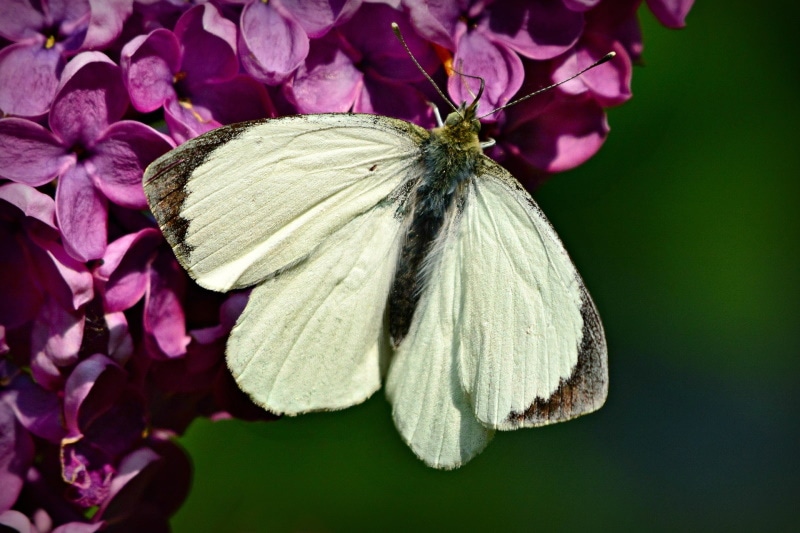
| Scientific Name: | Pieris rapae |
| Wingspan: | 1.3 to 1.9 inches |
You can find the Cabbage White throughout the continental United States, and Virginia is certainly no exception. A Cabbage White butterfly is almost all white but has black dots in the center of each wing.
As a caterpillar, many gardeners see this insect as a pest since the cabbage worm will gladly chomp through plenty of produce as they continue to grow.
- Related read: 8 Most Common Types of Butterflies in Maryland
18. Eastern Comma Butterfly
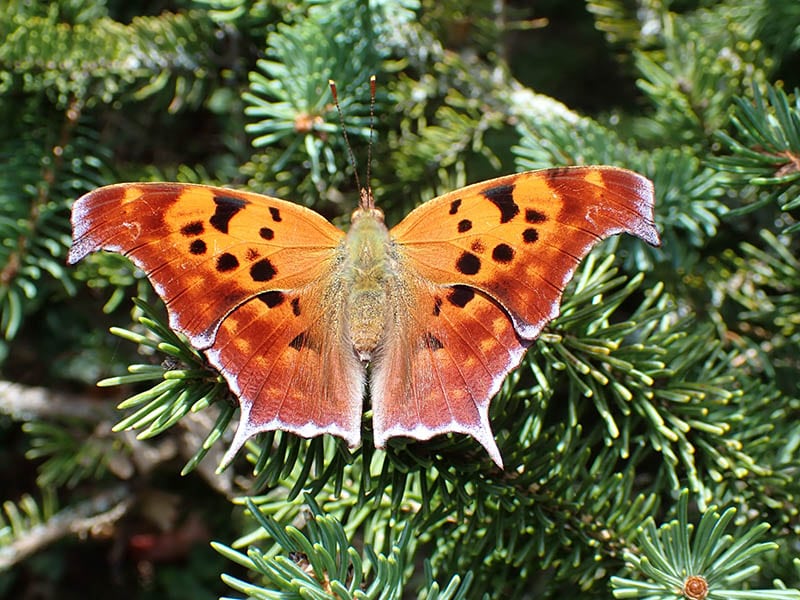
| Scientific Name: | Polygonia comma |
| Wingspan: | 1.8 to 2.5 inches |
While the Eastern Comma has a great color pattern and a unique wing shape, it’s not a butterfly species that’s easy to attract to yards or even to spot in the wild. That’s because they feed on rotting fruits, carrion, and animal dung, which are all things we try to keep away from our yards!
Unlike many butterflies that love to visit open areas, the Eastern Comma prefers forests, but you can find them in some yards or parks.
19. Spicebush Swallowtail Butterfly

| Scientific Name: | Papilio troilus |
| Wingspan: | 3 to 4 inches |
The Spicebush Swallowtail starts as a bright yellow caterpillar, but when they morph into a butterfly, they’re almost all black. They have some blue and white on their wings, but it’s the dark black portions of their wings that really make them stand out.
They’re also a much larger butterfly species, with some of their wingspans topping out at 4 inches!
20. Variegated Fritillary Butterfly
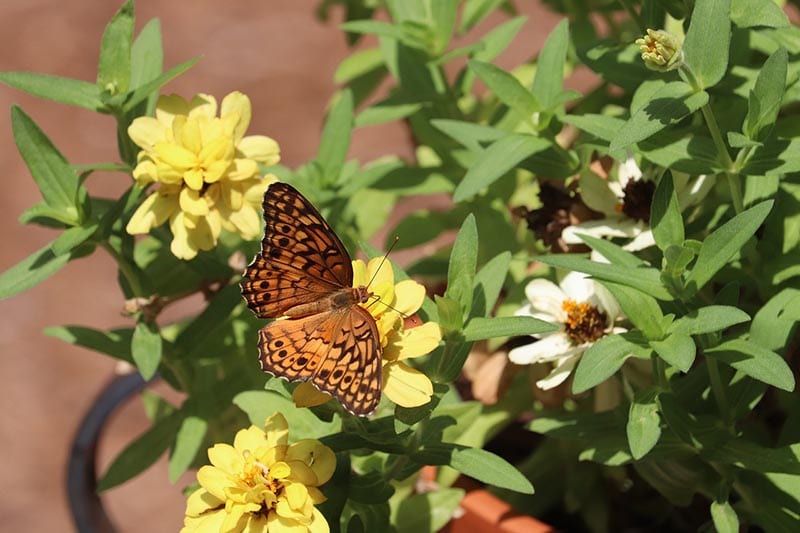
| Scientific Name: | Euptoieta claudia |
| Wingspan: | 1.75 to 3.25 inches |
While the Variegated Fritillary butterfly is beautiful, it’s really the caterpillar portion that steals the show. It’s a bright orange caterpillar with black spikes throughout its entire body.
Once it morphs into a butterfly there’s plenty of black and orange throughout, and you can find them in open meadows, lots, and fields.
In Conclusion
While we couldn’t highlight every butterfly species in Virginia for you here, hopefully after going through 20 of the most common, you have a great idea of what’s out there and can identify which type of butterfly you saw the next time you go out.
And if you haven’t had the chance to spot any of these amazing butterflies in Virginia yet, the next time spring comes, head out and see what you can find before things heat up too much!
Related read:
- 20 Types of Butterflies in Minnesota (with Pictures)
- 12 Most Common Types of Butterflies in New Mexico (With Pictures)
Featured Image Credit: Teresa, Pixabay
Contents


